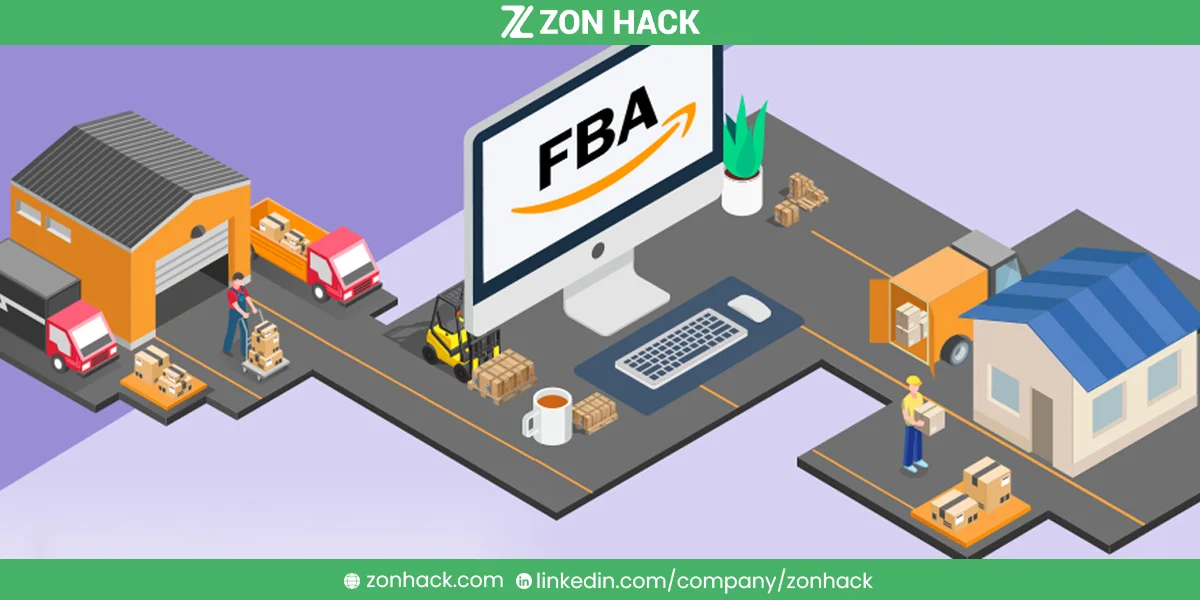You must have heard of Amazon inventory, but do you know what it means? Do you know how to replenish & track a highly profitable Amazon inventory?
Don’t feel bad if you are hearing it for the first time, and it’s not a big deal if you don’t know what it means. However, we will extensively discuss what an Amazon Inventory means and manage it successfully in this article. We will equally share the comprehensive step-by-step guidelines on how to track an Amazon inventory for more profitable deals and transactions.
So, let’s get down to business.
What Is Amazon Inventory?
Just as ‘inventory’ implies, Amazon Inventory simply means the stock of goods or items available on sale at Amazon. As you already know, Amazon is an e-commerce platform that allows customers to purchase items in the comfort of their homes.
Just as it permits users to purchase various goods at the comfort of their homes, Amazon equally permits you to make your goods available for sale using their highly-rated and well-known commercial platform. Therefore, the process of recording your stocks or items available — or already supplied — to Amazon is known as Amazon Inventory.
How to Sell Your Products on Amazon
With Amazon, you can sell your products to interested buyers from anywhere in the world. All you need to do is ensure the following steps outlined below:
- Step 1: Create an Amazon Seller’s Account: This is the first step to take if you must become a successful Amazon seller. There are two plans to choose from while creating your account, individual and professional plans. Each plan involves a commission you would pay per sale. Government ID, a business email address, is a required factor while creating your Amazon seller account.
- Step 2: Download Amazon Seller App to track how your products perform in the market.
- Step 3: Decide what to sell: It might be books, groceries, and other items. It all depends on your choice and how you think people would patronize your product.
- Step 4: Add your products to Amazon: Adding your products shouldn’t be any problem. You just need to place them in the right category, such as book, Camera & Photo, Amazon Kindle, B2B, and Beauty, etc.
- Step 5: Provide all the needed information about your products.
- Step 6: Source for buyers.
The six steps above are just the summary of how to become a qualified Amazon seller. You can CLICK HERE to learn more on how you can successfully sell your item via Amazon.
Terms to Know as An Amazon Seller
Now that you’ve successfully created an Amazon seller account and you have your items already in Amazon indexed pages, it’s important you know some of Amazon terminologies.
These terms and abbreviations would surely help you know more about how to replenish & track highly profitable Amazon inventory. They include:
- Amazon FC
FC is known as Fulfillment Center. It’s a massive warehouse provided by Amazon for storing items before sales.
- Amazon FBA
FBA simply stands for Fulfillment by Amazon. It is one of Amazon’s services that allows sellers to store their items in the fulfillment center.
In this case, the e-commerce company is in charge of picking, packing, shipping, and supplying any item requested by interested buyers. However, FBA is a bit expensive, so you should be ready to pay a higher commission once your item is sold.
- Amazon FBM
FBM is an abbreviated version of Fulfillment by Merchant. FBM sellers are allowed to oversee every selling process, including storing, picking, packing, shipping, and supplying it to customers who ordered their items via Amazon.
In this case, the fee (commission) paid to Amazon is relatively cheaper than the FBA sellers.
- FCA
It means Free to Carrier, and it applies to all Amazon sellers irrespective of your plans. This means you are responsible for any complaints or issues that could arise once the product is handed over to its buyer.
Step-by-step Guide on How to Replenish an Amazon Product
Replenishing a profitable Amazon inventory simply means doing everything possible so that your customers don’t land on an out-of-stock page, which could affect Amazon’s search rankings in the long run. It equally means ensuring you don’t lose out to other sellers and competitors to keep enjoying Amazon’s undeniable trust.
Having said that, below are detailed ways to avoid running out of Amazon inventory:
1. Reach Out to Your Suppliers and Know Much About Them
The first thing to do if you must track & replenish a highly profitable Amazon inventory is to know your suppliers. Know their busy time, chipping time, lead time, and other essential factors to ensure you won’t run out of stock.
You shouldn’t rely on one supplier to avoid running out of stock. Try to have both local and international suppliers, depending on your financial capacity and market status.
2. Explore Amazon Inventory Management Software
One of the most effective ways to track and replenish a highly profitable Amazon inventory is by making use of Amazon inventory management applications. Combining your impressive management skills with the app’s effectiveness would go a long way to help you get accurate information about your daily inventory.
Apart from accuracy, Amazon inventory management software guarantees speed. Thereby providing you with the opportunity to channel your time on other essential aspects of your business.
An average Amazon inventory management tool has a user-friendly and well-resourced Amazon’s Seller Central dashboard— showing your daily, weekly, and monthly sales. This will help you track your sales records and also make all the necessary inventory decisions required for proper growth.
3. Know and Have Full Knowledge of Your Inventory Turnover Rate
Another way to replenish & track a highly profitable Amazon inventory includes understanding your inventory turnover rate. Inventory turnover simply means the number of times you sell through your Amazon inventory and later replenishing it within a particular period.
You must know how your products fare in terms of customer patronage as it will help you maintain stock levels between inventory shipments. Understanding your inventory turnover rate equally ensures you make an accurate reorder of stock; hence you don’t over-buy or under-buy stocks.
Interestingly, there is an Amazon built-in app created to help you monitor your turnover rate. Amazon Selling Coach is a forecasting tool that keeps track of your current stock and advises you on the quantity of stock required to fill orders for a specific period.
4. Understand Supply Chain Lead Times
As mentioned above, the supplier’s lead time is crucial to your chances of replenishing a highly profitable Amazon inventory. Your Supply Chain includes all the delivery procedures— right from product sourcing to delivery into the Amazon warehouse.
On the other hand, lead time is the time taken for stock to arrive after placing your order. Hence, you must understand your supply chain and lead time because they play an essential role in tracking your Amazon inventory.
It helps you know who and what is involved in sourcing, receiving, and storing your Amazon inventory. The best way to maintain a healthy supply chain and lead time includes knowing your suppliers’ manufacturing and delivery prowess.
5. Don’t Overlook Seasonal Sales Fluctuations.
Sales rates are often fluctuating because customer’s purchasing behavior can be decided by time and season. Some products tend to experience a massive surge in sales during holidays and festive periods, while others tend to witness a decrease in sales.
Seasonal change in sales could affect your inventory. Therefore, you should be able to predict which product will increase or fall in demand at some point. This will help you regulate the quality of products you supply to the Amazon warehouse.
In a nutshell, we advise you to forecast your inventory levels two months before any holiday or festive period so you can make the right supply choice. In the same vein, forecasting your inventory level before any seasonal change allows you to call your suppliers’ attention to upcoming changes in your shipping or supplying patterns.
This will help them get ready for extended turnaround times attached to a peak season. Constant communication with your suppliers would be of great help in this case.
6. Prepare for Unforeseen Emergency with Reserved Stock
Some call it ‘safety stock’ others call it ‘reserved’ stock. Whichever you decide to call it, it means the stock is reserved for emergency purposes. As an Amazon seller aiming to replenish a highly profitable Amazon, you must have stock to cover up for any emergency.
An emergency could come in any form, including increased customer demand, delay in the supply chain, etc. Take a critical look at your dashboard, check for the maximum daily sales, average lead time, and maximum lead time for the past 12 months. This will provide you with a vital clue on the level of items to be stored as safety stock inventory.
7. Explore Drop-shipping For More Profits
Drop-shipping is a great way to improve your profits as an Amazon seller. It allows the suppliers or manufacturers of your products to sell directly to interested customers on your behalf. With this strategic selling method, you don’t have to buy stock up-front. Therefore, we can say drop-shipping doesn’t involve much risk, and it is cheap as there’s no need to pay for storage space.
Since Amazon has a strict drop-shipping policy, you must ensure that your drop-shipping suppliers comply with Amazon rules and regulations. Ensure they don’t include high added costs so that your price won’t be high for an average person.
They must provide regular inventory level reports so you would know when an item isn’t available. You must trust them to do the job accurately so your seller account won’t be suspended.
8. Strategic Use of Sales Promo
Every seller needs to advertise their products to create awareness in public. As an Amazon seller hoping to replenish his or her highly profitable inventory, you must carefully explore promotions.
Promo and incentives help to attract buyers, but you should be very careful in your approach. An increase in customers could lead to a total buy-out of your stocks if there is any unexpected delay in the subsequent supply chain.
It could affect your Amazon ranking and customer base. You can prevent this from happening if you have a perfect way of running your promotions. Create a threshold for a specific number of items you are promoting in your inventory. End the promo once the set numbers are reached, especially if you aren’t sure when the next supply will occur.
Alternatively, you should let your suppliers know that you are interested in ordering a reserve of the products you are promoting, albeit the delivery date remains unknown until the available stock is about to end. This way, you will be on the safe side because you won’t experience overstocked items or out-of-stock situations.
9. Regulate Your Products Price
As we edge closer to the end of this write-up, the last way to replenish and track your highly profitable Amazon inventory includes regulating your price.
As stated earlier, it is entirely unacceptable to run out of stock as it would affect your reputation and Amazon’s ranking. Hence, do not hesitate to increase your price once you noticed a spike in the sales of a product that will soon finish in stock.
This approach will undoubtedly influence consumers’ behavior in your favor as they will go for a lower price. Nonetheless, you should return to the initial price as soon as your suppliers made a new delivery.
Conclusion
Tracking a high profitable Amazon inventory can be very daunting and challenging for inexperienced Amazon sellers.
However, we advise you to keep visiting this page for helpful tips and guidance. Alternatively, you can email us for a quick session with any of our dedicated Amazon product research experts. Meanwhile, feel free to share your thoughts and questions in the comments section below.




